Botley and the narrow bridge of art

Amidst the turmoil of the Botley Road bridge works, a remarkable artwork is being created, both to tell the story of the bridge and its complexities, and the rich history of West Oxford.
Local artist Chris Shipton has quietly been creating artwork to adorn the pedestrian walkway between Oxford railway station and West Oxford.
“A project of this scale has huge impact – and often the extraordinary story is lost behind the disruption,” says Shipton. “These illustrations are here to help us understand what’s happening, what’s being achieved, and what makes West Oxford so special.”
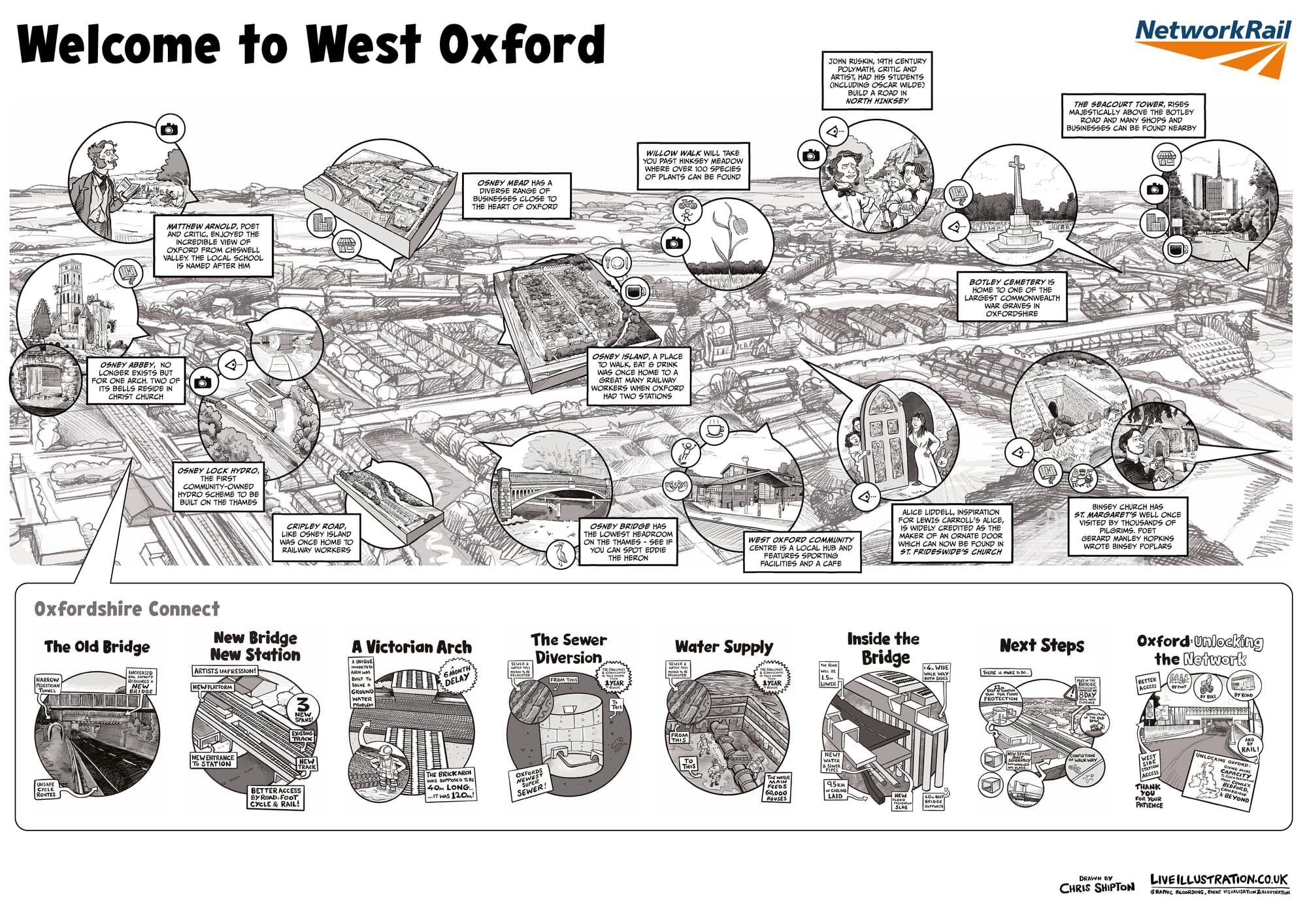
Tempers across Oxford are understandably frayed at the continued delays to this project, which has kept the Botley Road closed since April 2023. The illustrations are in part to help explain the project, charting the key milestones of the construction – from the discovery of a hidden Victorian arch beneath the road to the installation of new water and sewer connections – all while keeping critical rail services running.
Shipton comments: “One interesting thing for me was that there was this story about a hugely complex engineering project and some pretty amazing things they have done, and some huge challenges to overcome. That part was easier to create images for. But it's all obscured by everyone being so thoroughly pissed off with the road closure.”

The previous bridge was too narrow for the new rail capacity and unsafe for pedestrians and cyclists to boot. Replacing it meant underground excavations. They found a Victorian arch, built originally to get round a groundwater problem. It was believed to be 40m long, but was in fact three times the size. Evidently while Victorian engineering was famous, Victorian record keeping not so much, so it was only discovered on digging down. This caused a six month delay. Then they needed to relocate a sewer and water pipes, without cutting off water indefinitely to 60,000 homes which each caused a year's delay due to the complexities of what was found underground – but as a bonus, apparently, Oxford's newest super-sewer has been created, and you don’t see that hit the headlines. (Don't get us started on Oxford's sewage problem.)
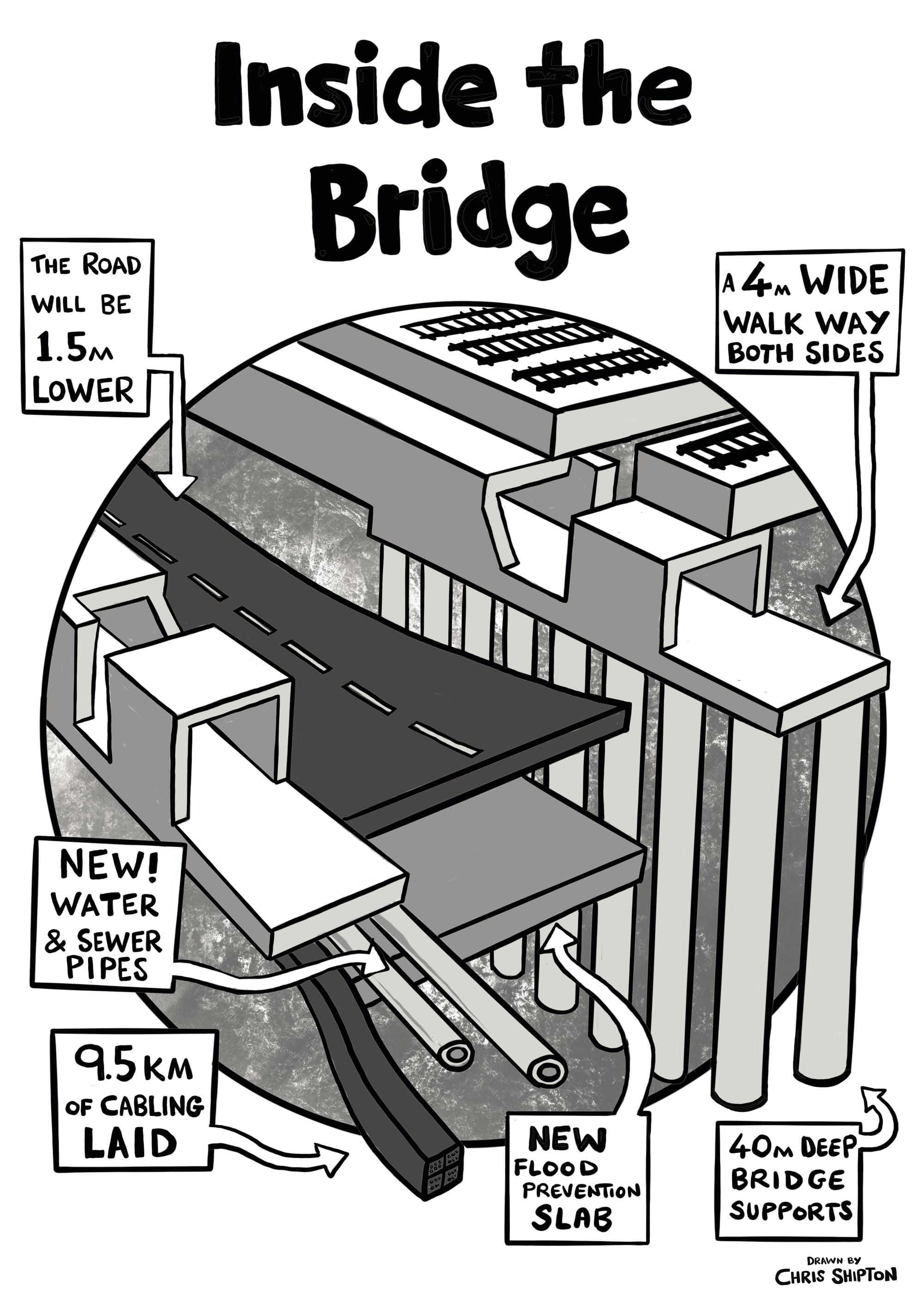
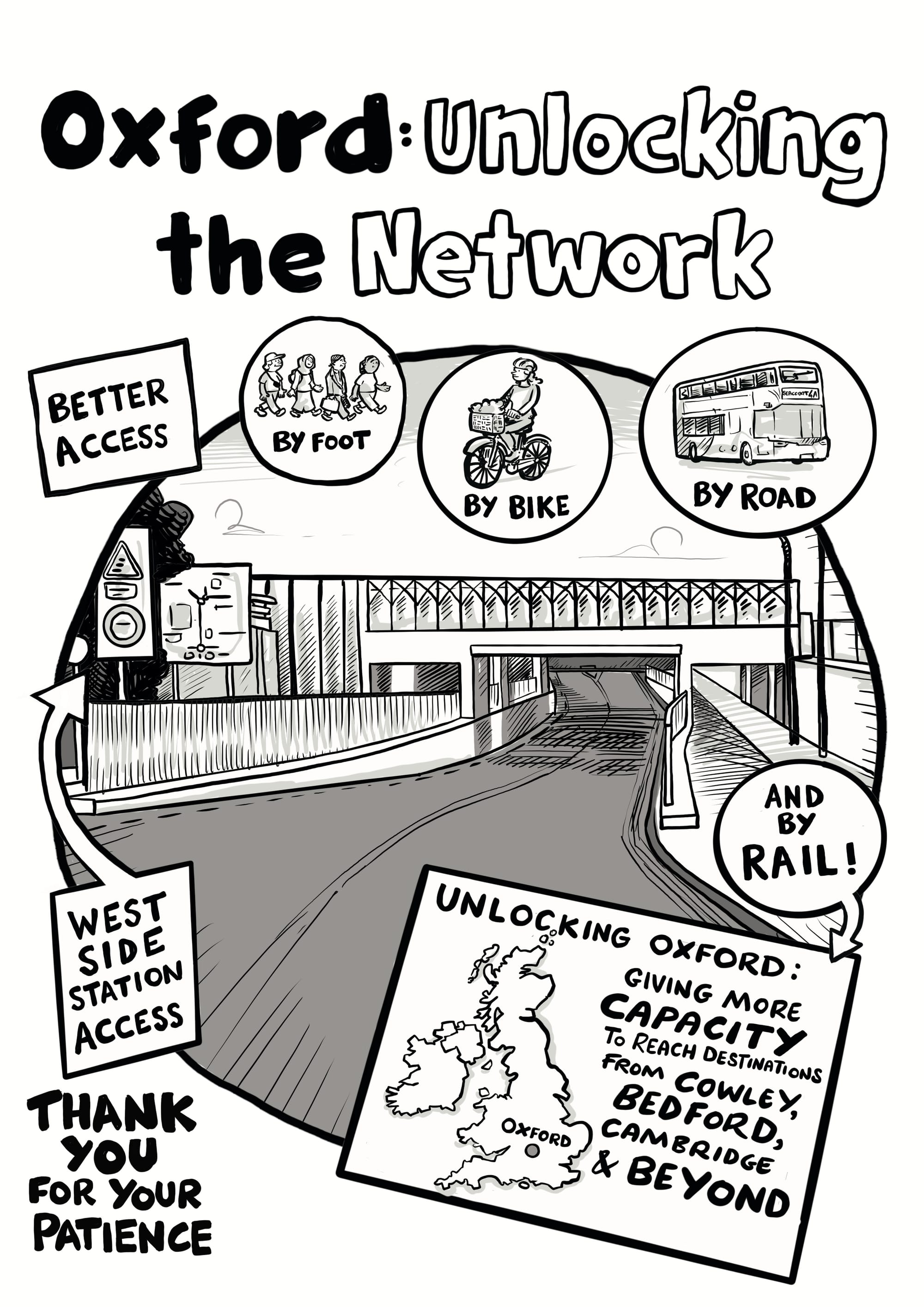
But it'll be worth waiting for, says Giles Clark for Network Rail:
“The work we are undertaking is vital to transforming rail travel in the city and enabling projects such as the reopening of the Cowley Branch Line, which was confirmed recently, and East-West Rail.”
The illustrations give us both a glimpse of what the finished project will look like, and the sheer complexity of its construction.
Welcome to West Oxford
The illustrations also share some of the history and highlights of West Oxford. Shipton explains the way the art developed.
“I think for me the big challenge is how you represent an area and all its various people and businesses and culture in one image, and the answer is you can't. You have to pick bits.
“One of my great friends immediately suggested a eulogy to the sadly departed Toys'R'Us. That did not make the cut. I picked up a book in Oxfam by Paul Sullivan called The Little Book of Oxfordshire which helped bring out a few stories. For example, Seacourt village was once a village full of pubs that serviced pilgrims that would journey to the healing well in Binsey, but had disappeared by the 18th century. But we still have the Seacourt Tower, and the Healing Well.
“I went and visited the locations, mainly by bike with my daughter. And it was really good being a tourist in your own city – there are still more things about West Oxford that are not in the drawing. I talked to some local historians and other people about the images. I went and tracked down the well in Binsey churchyard (a lovely church) and it felt like a pilgrimage, off the beaten track, worth the trip. It was the same tracking down the Signal Elm and 'Ruskin's House' (it wasn't his house).”
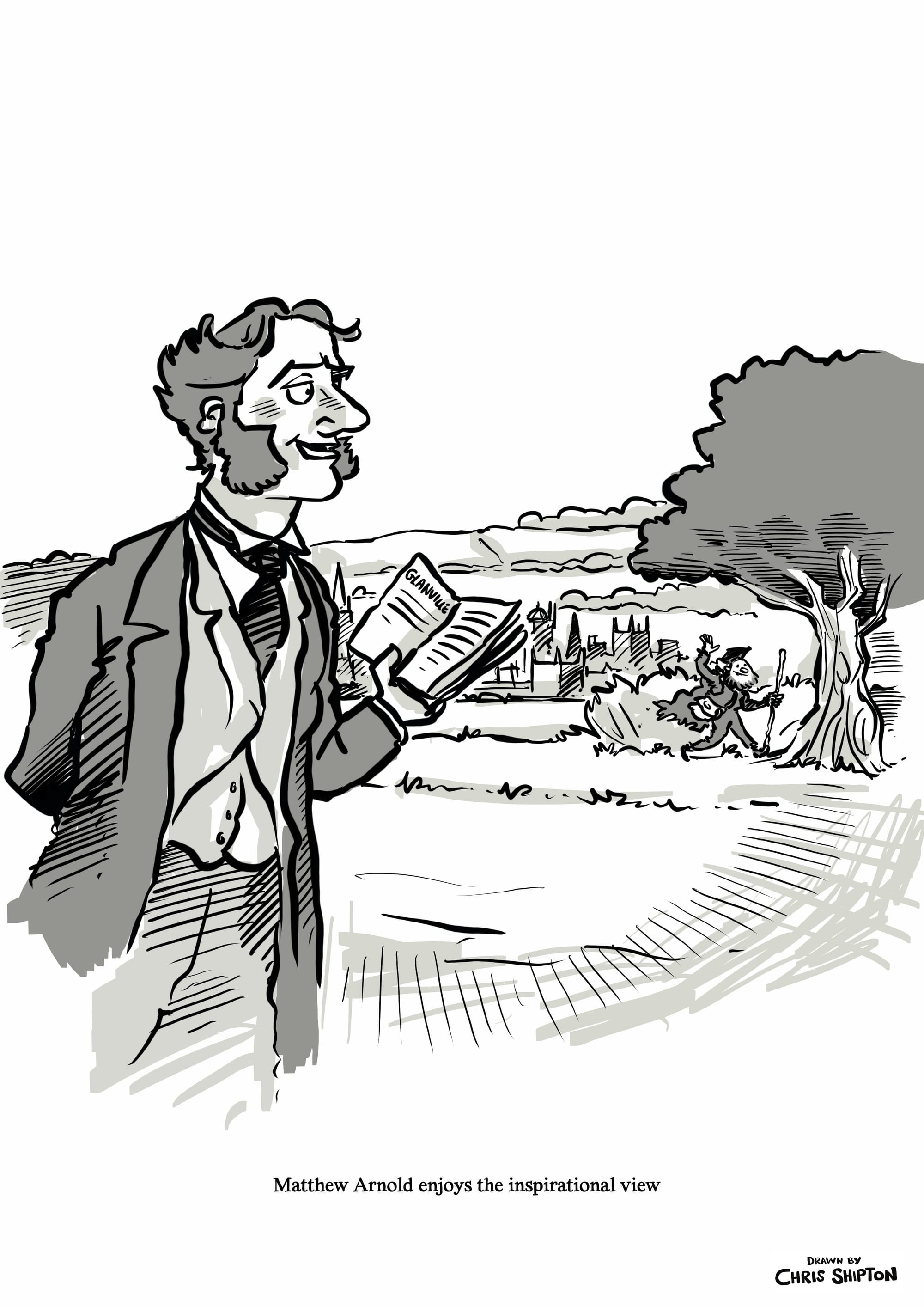
The art features the Victorian poet and social critic Matthew Arnold, a fellow of Oriel College and Professor of Poetry. His major work in social criticism is Culture and Anarchy, from which comes the oft-quoted phrase “[culture is] the best which has been thought and said”. It is still in print today. He wrote about West Oxford in the poem Thyrsis, which introduced the phrase ‘dreaming spires’. Botley’s Matthew Arnold School is named after him.
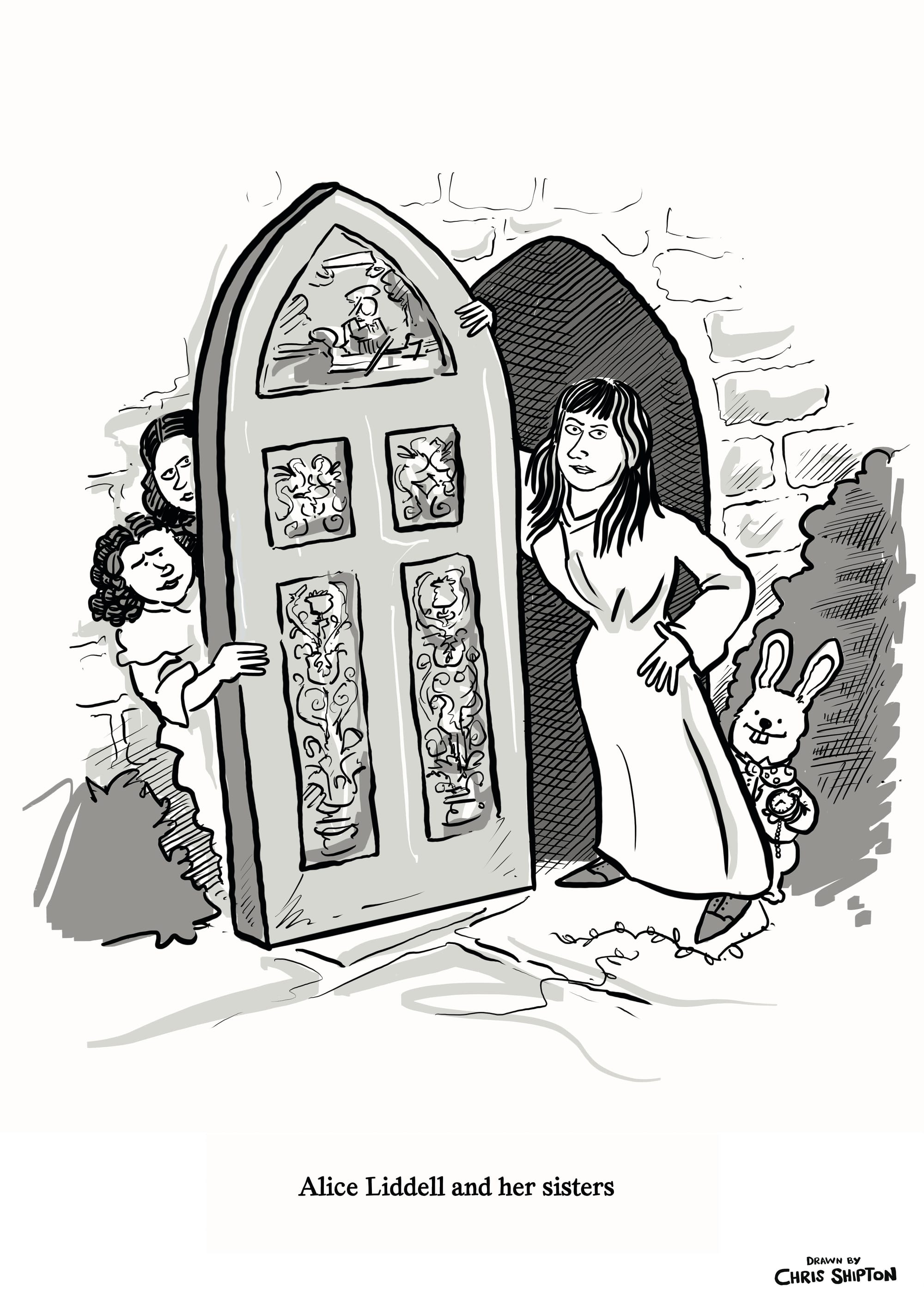
Another panel features ‘Alice's Door’, in St. Frideswide’s Church, carved by Alice Liddell, on whom the fictional character of Alice in Wonderland was based. Alice was the daughter of Henry Liddell, the dean of Christ Church, where Charles Lutwidge Dodgson, better known by his pen name Lewis Carroll, was a maths tutor.
But her life was far more than the muse for a childhood tale. She allegedly had a brief romance with Prince Leopold, son of Queen Victoria, with whom she remained a close friend until his death and after whom she named one of her sons. She also took a great interest in art and was tutored by John Ruskin, a contemporary art critic who also features in the mural. The door is her legacy, along with the Lyndhurst War Memorial, which she designed after losing her sons in the First World War.
More contemporary parts of the city also feature, such as Osney Lock Hydro, the first community-owned hydroelectricity scheme to be built on the Thames, and West Oxford Community Centre. These, and others, are places for passers-through to discover either through the art, or pique curiosity for further exploration.

About the artist
And what of the artist himself – the ink behind this mega project? Chris says he's lived in Oxfordshire and Oxford (Wheatley, then Headington) for most of his life, with a studio in Osney Mead. He went to Banbury Art College and then on to Camberwell College of Arts for a degree in Visual Arts Drawing.
“This project has been a genuine journey,” says Shipton. “I thought I knew West Oxford, but working on this made me look again – and fall in love with places I’d taken for granted. The walk to find the Signal Elm mentioned by Matthew Arnold will bring you to one of the best views of Oxford – and you understand why Oxford Preservation Trust has gone to such great pains to protect it.”
Much of his work involves live illustration for corporate clients. He comments: "It has been nice to do some work about where I live. Network Rail's brief was relatively open as the team really wanted to do something to boost West Oxford in the face of all the inconveniences it has experienced over the recent years, and have a local person do it. There were so many elements we could have included. The balance I had to strike was that people have to look at this while swiftly walking down a load of hoarding with a building site either side. Hopefully the West Oxford segments and the Project segments will be clear enough for passers by to get what I have been calling a ‘Botley Fact’ on the way past. We will know if it works on the 13th.”
A light at the end of the tunnel?
We'll give the final word to Giles Clark at Network Rail.
“From our regular meetings with local residents, businesses and councillors, we understand the impact the project is having. While we’re working seven days a week to reopen Botley Road in August 2026, Chris’s artwork brings to life what’s happening behind the hoardings and highlights what a fascinating place West Oxford is.
“Since we reset the programme of work at Botley Road in January this year we have hit all our key milestones, most recently with the opening of the improved walkway which improves access for all, and we remain committed to opening the road in August next year."
The artwork is being installed on 13 November and available for the public in all its glory on 14 November.
